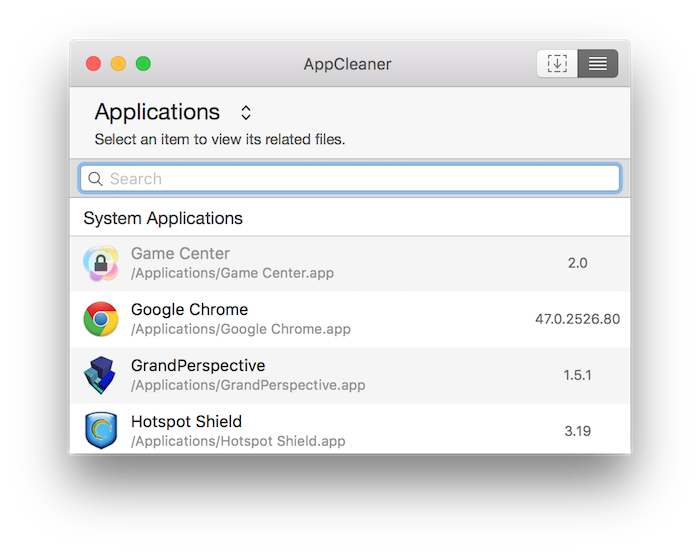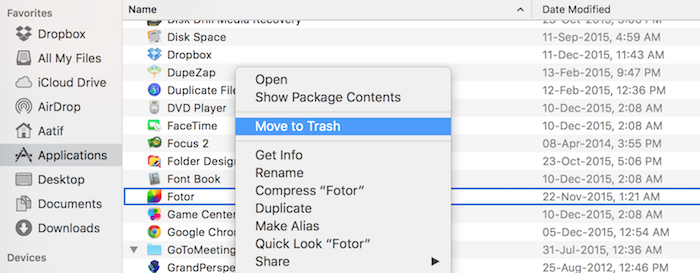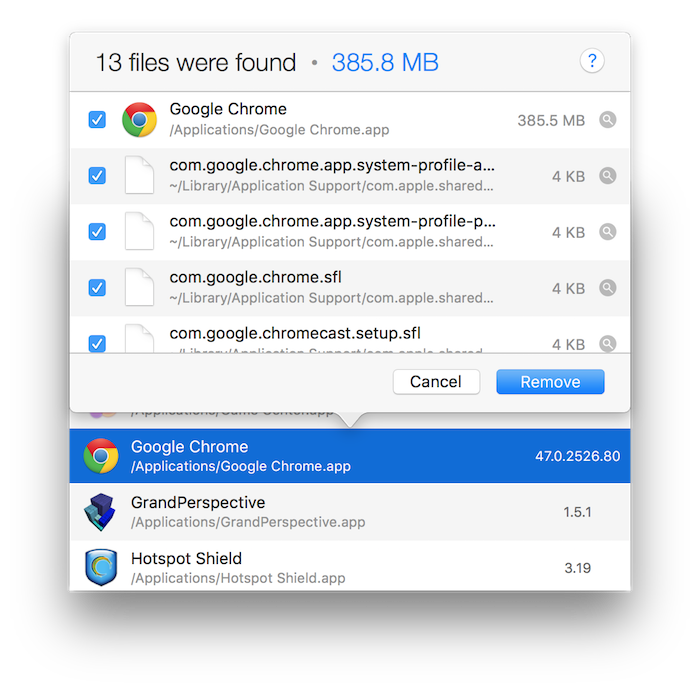How To Uninstall Programs And Apps On Mac
Irrespective of which operating organisation you're using on whatever device y'all may have, uninstalling programs and apps is inevitable. Perhaps you installed something that yous merely wanted to attempt out and don't really need it, or perhaps you're looking to brand some space in your device by removing less-used apps. Either way, every operating system has its own way of dealing with the uninstall process. On Windows, for instance, yous'll find (ordinarily) an uninstaller bundled with every program that you accept; else, you lot have the Programs & Features section in Windows Command Panel for this. Android and iOS handles the aforementioned with a simple press and hold on any icon and striking the tiny cross on elevation to go rid of it.
Whenever someone switches from Windows to Mac Bone X, i of the immediate woes is how to uninstall programs. That is because at that place is no immediately evident solution to doing so. The reason for this is pretty elementary; uninstalling apps on a Mac is infinitely simpler than any other platform. Permit'south have a await at how.
How Mac Apps Differ From Windows
The primary departure between Mac and its prime number competitor, Windows, is how apps and programs are stored. Mostly, Os 10 apps are comprised only of .app files that are normally stored in the Applications folder on your Mac. This is peculiarly true of the apps that you download from the Mac App Shop. And so, some programs might likewise come with some preferences which are stored in a .plist (holding list) file in the /Library/Preferences folder. Even so others might have an boosted component called a Kernel Extension (stored via .kext files in /System/Library/Extensions). These are highly sensitive and critical to the function of a Mac, and are often shared by more than one apps. Hence, it's unadvisable to tinker with them unless you're absolutely sure of what you're doing.
As we noted earlier, this is inherently dissimilar from Windows which operates under a organization Registry and every installed program has an entry at that place. This is why removing Mac apps is simpler than what you'd do in Windows.
Uninstalling Mac Apps By Dragging Them To Trash
This is the simplest and most straightforward method, and works best with apps that you've downloaded from Mac App Store (or those that have but an .app file in the Applications binder). Either locate the app in Finder or from the Launchpad and drag its icon to Trash. That's it – the app is "marked for removal" and once yous empty Trash, they're done for.

Please note that while this method is well suited for apps that do not accept preferences or kernel extensions, that doesn't hateful you cannot uninstall those using this method. Anything tin can exist 'trashed;' it just won't get rid of the other pieces by itself.
Using A Defended Uninstaller App (Best Method)
This is my personal preference and recommendation for all uninstallations on a Mac. While there are a number of uninstaller programs bachelor out there (both paid and gratis), I'll highly recommend using AppCleaner. It'due south a free app that does wonders when uninstalling a single app, or a bunch of them at the same time. AppCleaner is updated adequately regularly too, ensuring long-term developer support for an app such as this. It volition list down all your bachelor apps, widgets and plugins, and selecting any of them will chase for whatever files associated with the said app, allowing for i-click removal of installed apps. This works non just for single-file .app packages, but also circuitous ones that might have associated .plist and .kext files. AppCleaner volition also handle installations that might require password input, but that largely depends on your preferences and security settings.

Notation: Regarding password requirement for removal of sure apps, that might apply in several cases. Generally, if an app required password input when y'all were installing it, chances are high that it will require a password when uninstalling equally well. Withal, a look at your System Preferences might be able to change that, so it's hard to give a universal dominion effectually this.
Manually Uninstalling A Mac App
While y'all may accept guessed it by at present, the lack of a system registry in Mac allows for manual removal of whatever and all apps, although across this point things start getting riskier. That is because if you don't know what you're doing, you might end upward removing something that shouldn't have been. All the same, if you're willing to brave this area, here's how you can practise.
Removing the .app file
This is pretty straightforward. Discover the .app file (usually located in the Applications folder in Finder) and send it to trash, as we discussed before.

Removing the .plist file
Removal of property listing files is also principally the same, only it'due south a piffling tricky to locate them. We noted before that these files are located in the /Library/Preferences folder, but you cannot hands access this binder on a Mac. To visit this location, hit the Go To Folder option in Finder (either through the Go menu or pressing Control+Shift+Grand together, and then inbound the path /Library/Preferences. One time in, yous tin can manually send any associated .plist files to trash as usual.

It's worth noting here that these .plist files are really small — ordinarily a couple of kilobytes at best — and then removing them won't take any impact on bachelor infinite.
Removing the .kext files
I would reiterate that this is unsafe territory and you should not carp with removal of kernel extensions unless you're admittedly sure about what you're doing. It won't hurt to fill-in the files that you're removing to another location just in case. Still, if you desire to keep, navigate to the /System/Library/Extensions folder using the Get To Binder dialog, and put those files in Trash as well. If something goes incorrect, restore the file to its original location from the backup yous created.
Uninstalling Mac Apps Using Terminal
OS X is Unix-based, which means you can basically do just most annihilation using Terminal. Quite frankly, in that location's no point really in doing this, except maybe a preference for using command line or showing off your geeky skills to your friends. Uninstalling is pretty unproblematic: fire up a Terminal session and enter the following
sudo uninstall file:///<application path.extension>
where <application path.extension> will be replaced by wherever the app is located and whatever the format is. To illustrate this, I have an app called Fotor in my Applications folder, and then the command that I will enter is:
sudo uninstall file:///Applications/Fotor.app

Pay attending to the three slashes instead of usual 2 in this command. The first two belong to the command syntax, while the tertiary one is to signify the Applications folder path. Knowing this, y'all tin can replace the path and apply this command to basically any location on your Mac.
Again, depending on your preferences and settings, you lot might be asked to enter your password if removing something using Terminal.
Uninstalling Microsoft Office 2011 From Mac
It might seem surprising why I am making a instance of particularly MS Office 2011 uninstallation, but that proved most annoying when I tried to take information technology off my own Macbook. You lot see, MS Function 2011 isn't packaged really well, and if you really want to get rid of it, the all-time approach is a combination. Start, employ AppCleaner and get rid of everything that says Office 2011 or related (there will exist a bunch of them). Adjacent, hit the Applications folder and detect the Office 2011 folder, and motility everything to Trash. Finally, go to the/Library/Preferences binder and ensure that no remnants remain of Office 2011. In that location really isn't an easy manner to bargain with it, and then this is probably your best bet.
SEE Too: eleven Handy Tips and Tools to Keep Your Mac Clean
Conclusion
This pretty much covers the basics for all possible methods of uninstalling an app from your Mac. There are certain apps that will prove hard to remove — such as our example of MS Role 2011 — only at that place virtually isn't anything on your Mac that you cannot remove.

As a recommendation, I will reiterate the usage of AppCleaner in a higher place any other method, simply because of how easy it makes to remove not but any app, just all its associated files every bit well. The rest of the options are there; they just aren't worth the hassle when you lot have such an easy solution available for free.
Source: https://beebom.com/uninstall-programs-apps-mac/
Posted by: trapphambethinde.blogspot.com


0 Response to "How To Uninstall Programs And Apps On Mac"
Post a Comment